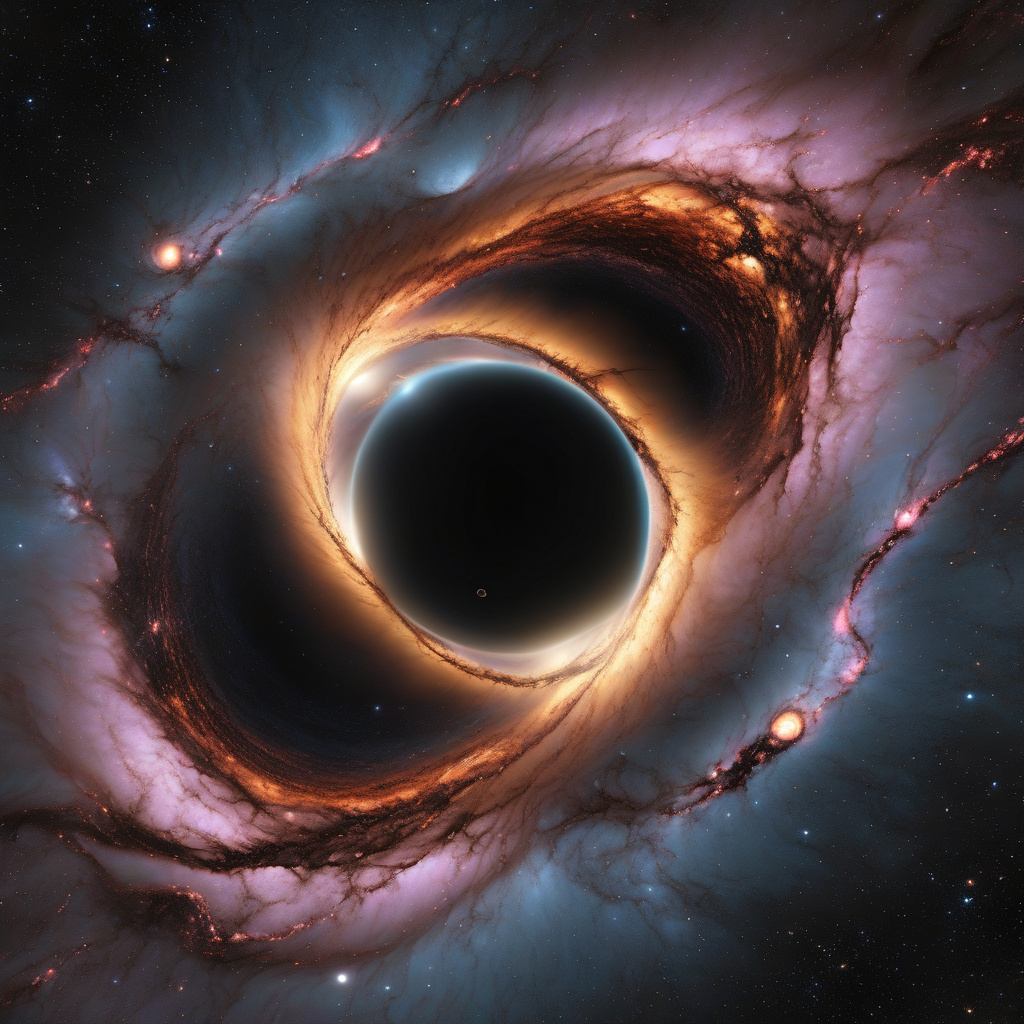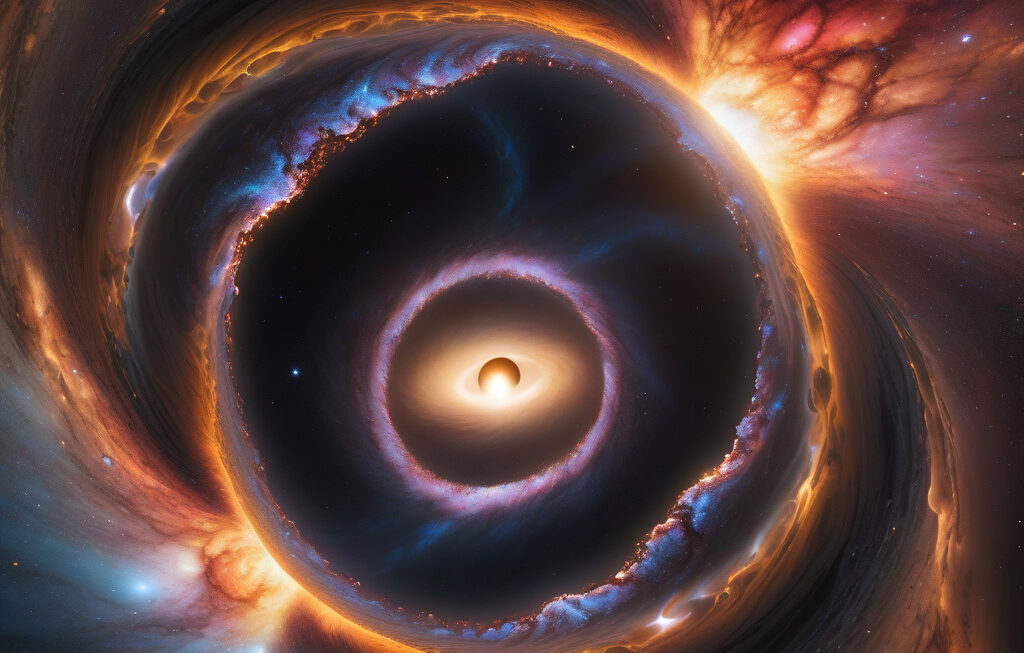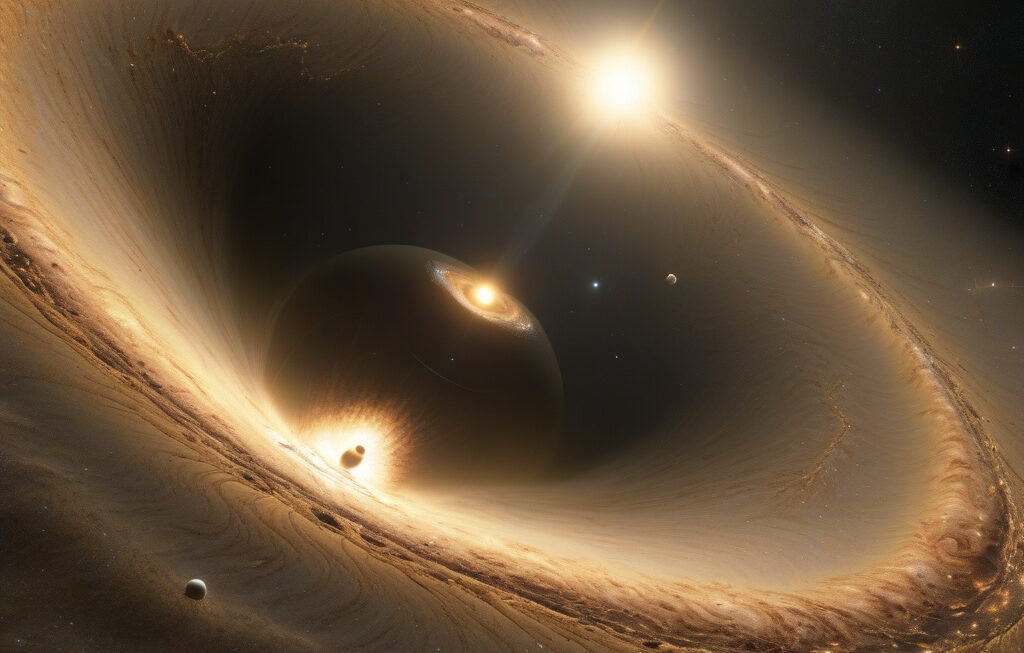Astronomers Uncover Black Hole Devouring 3,000 Suns Annually in Early Universe
Deep in the distant universe, astronomers have found a black hole that seems to be insatiably hungry, devouring an astonishing 3,000 suns every year. This remarkable discovery sheds light on the voracious appetite of black holes during the early stages of the universe and provides valuable insights into the evolution of galaxies.
Located billions of light-years away, this supermassive black hole, known as J2157, is among the most massive black holes ever discovered. With a mass equivalent to 34 billion times that of our sun, J2157 stands out as a cosmic giant, exerting a powerful gravitational pull that consumes everything in its vicinity.
The feeding frenzy observed in J2157 is a spectacle of cosmic proportions. As it engulfs an enormous amount of mass equivalent to 3,000 suns annually, the black hole releases an immense amount of energy in the form of X-rays and ultraviolet light. This energetic outburst not only illuminates the surrounding region but also influences the formation of stars and the growth of galaxies.
Dr. Christopher Onken, lead author of the study published in the journal Monthly Notices of the Royal Astronomical Society, describes the significance of this discovery: “The discovery of a black hole devouring 3,000 suns per year challenges our understanding of the early universe. It raises intriguing questions about the formation and growth of supermassive black holes and their impact on the cosmic environment.”
The relentless feeding habits of black holes like J2157 play a crucial role in shaping the universe as we know it. By consuming vast amounts of matter and emitting intense radiation, these cosmic behemoths influence the distribution of gas and the dynamics of star formation in their host galaxies. Understanding the behavior of supermassive black holes is therefore essential for unraveling the mysteries of the universe.
This groundbreaking discovery was made possible by the combined efforts of astronomers using cutting-edge telescopes and observational techniques. By analyzing the X-ray and ultraviolet emissions from J2157, researchers were able to estimate the rate at which this black hole devours stars and gas, providing valuable data for theoretical models of black hole growth and evolution.
As our understanding of black holes continues to deepen, new questions and challenges emerge. What triggers such massive feeding events in black holes? How do black holes reach such staggering sizes in the early universe? What role do these cosmic giants play in the formation of galaxies and the evolution of the cosmos?
The discovery of J2157, the black hole that devours 3,000 suns per year, marks a significant milestone in our quest to unravel the mysteries of the universe. By peering into the depths of space and time, astronomers uncover a glimpse of the cosmic forces that shape our existence and challenge our perceptions of the cosmos.
#BlackHole, #EarlyUniverse, #CosmicDiscovery, #Astronomy, #GalacticEvolution












